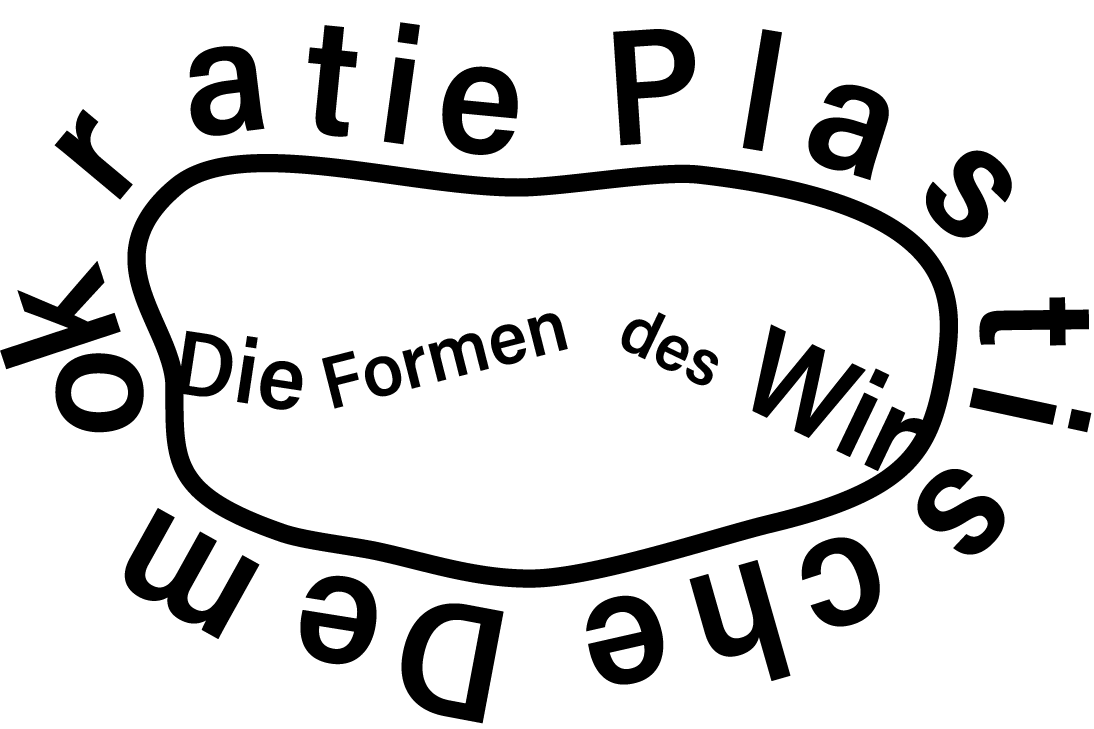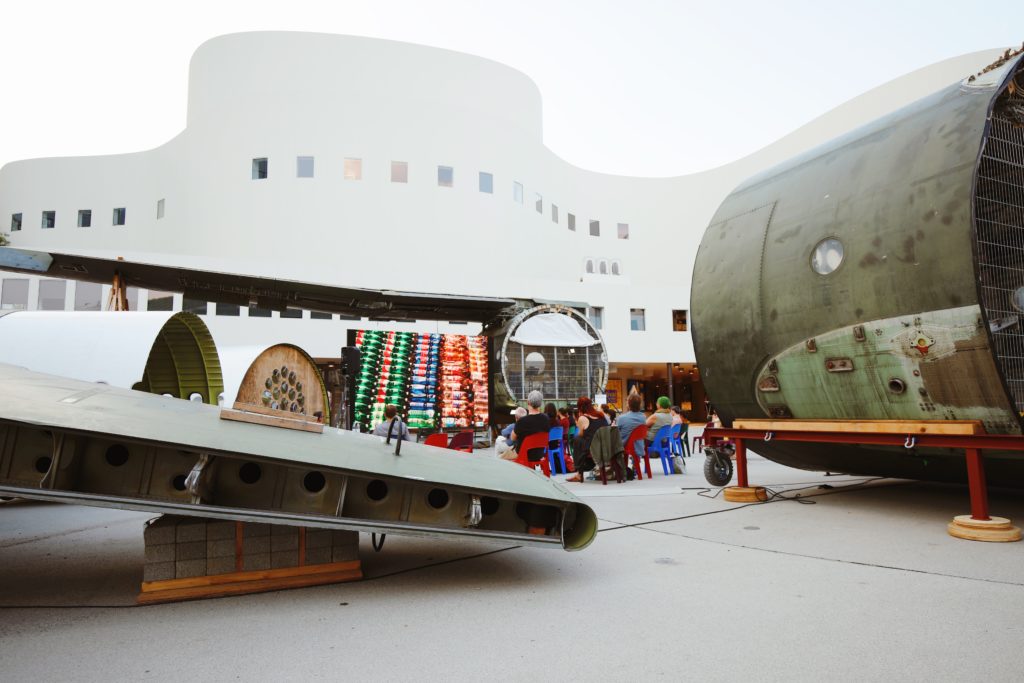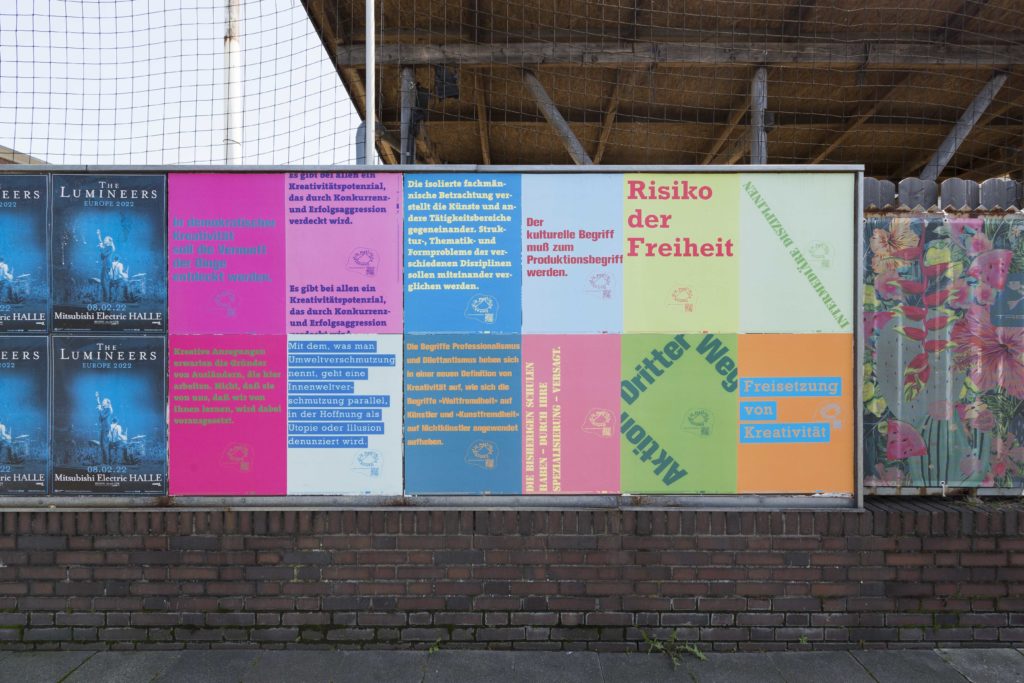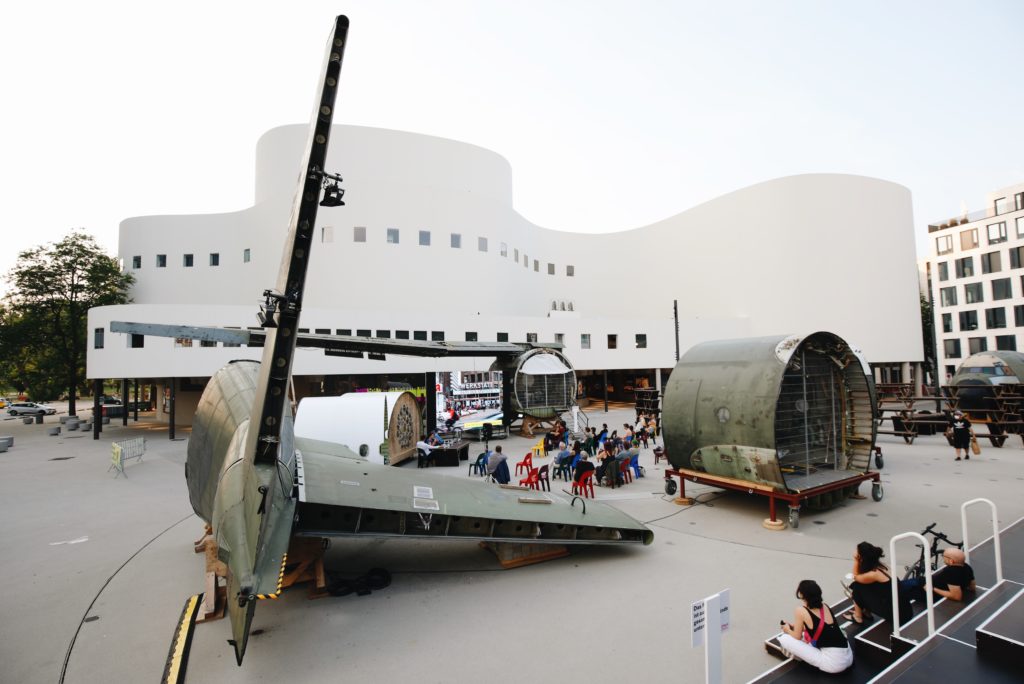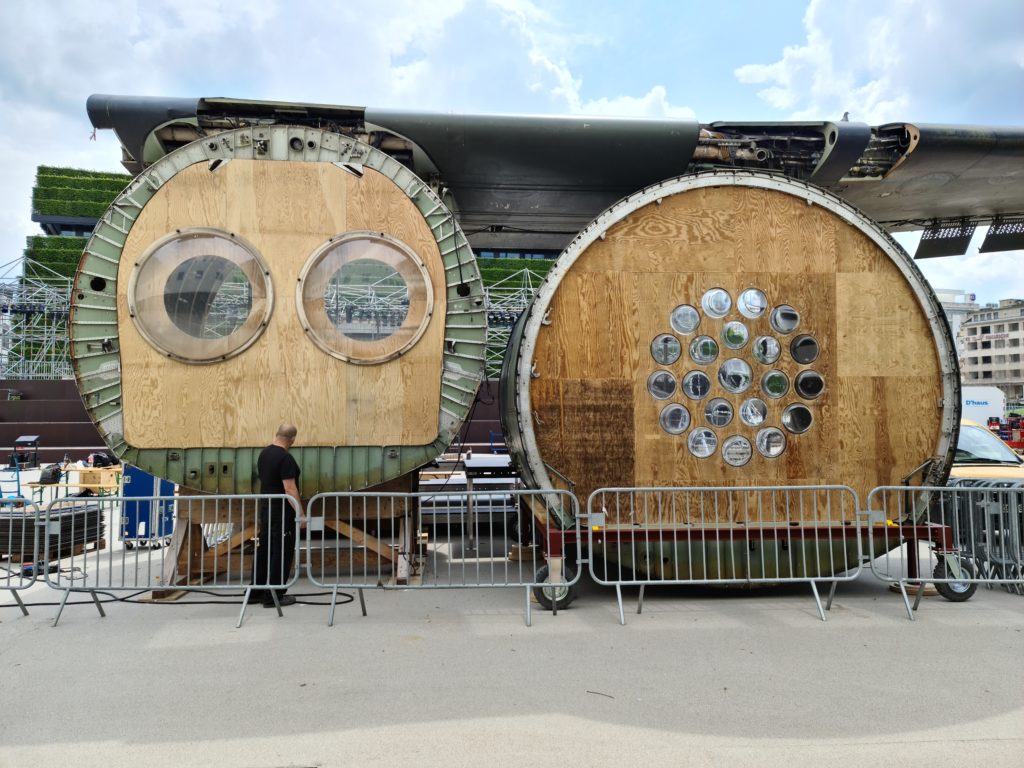»Sculptural Democracy. Forms of the We« unfolded online and in public space in Düsseldorf from June to September 2021. The multifaceted experimental arrangement took the 100th birthday of Joseph Beuys as an occasion to illuminate his impulses for the radical co-creation of democracy according to the principles of sculpture and to examine them with regard to today's challenges. The central themes of our time were negotiated: the political system, climate, capital, digitalisation, education and living together.
Behind the collectively developed project are the Kunstakademie Düsseldorf, the Heinrich Heine University Düsseldorf, raumlaborberlin and the project team »beuys 2021«. Together they invited architects, artists, scientists, students and visitors to explore and discuss Beuys’ ideas with them, to contextualise and update them.
The nucleus of the project was an experimental architecture developed by raumlaborberlin on Gustaf-Gründgens-Platz: in front of the Düsseldorf Schauspielhaus in the centre of the city. Here – in this structure serving as stage, image and building at the same time – pioneering radical democratic models were explored and compared. Utopias, ideas, plans for a more democratic democracy were discussed and negotiated. And people lived together. Whether cooking, eating, working or hanging out, speaking, performing or living: Sharing and participating were integral parts of the common thought process.
Kick-off, 8 – 15 Jun
kick-off
Roundtable
lectures
Gustaf-Gründgens-Platz + online
Models, 9 Jul – 29 Sep
models
Archive
poster campaign
open call
Stadtraum
Parlamente, 27. – 28. Aug
parliaments
debate series
actions
Schauspielhaus Düsseldorf
Live-in Lab, 22 – 29 Sep
Live-in Lab
Workshops
Performances
Living
Gustaf-Gründgens-Platz
»Sculptural Democracy« focused on six central themes of our time. These are topics that Joseph Beuys already focused on in the context of social sculpture: political system, climate, capital, digitalisation, education and living together. The events underlying the lab all revolved around these fields and the challenges they pose. The impulses emanating from Beuys were taken up, examined, expanded and updated.
Political System
What democracy, what political strategies would we need to effectively address poverty and authoritarianism, environmental degradation and climate change? Around the world, the conviction is spreading that the best chances lie in radical participation in political discussions, actions and decisions. Thus, alternative forms of communion and negotiation are being actively sought. Joseph Beuys tested such forms in collective artistic processes of work, deliberation and reflection, which he called »social sculpture«. The topicality, usefulness or even dangerousness of his ideas were explored here.
Climate
The climate change resulting from the sustainability crisis determines current action. If the Paris climate targets are not met, not only habitats will be endangered, but extreme changes in living conditions can be expected, affecting all aspects of life. The question is how democracies can function under the pressure of immediate action. How can they solve the problem of time limits and how can they behave in the face of refusals by non-democratic states? The artist Joseph Beuys has been publicly speaking out against environmental destruction since 1970 and, as an activist for the Green Party, has worked to have the ecological question raised in parliament. With his plastic democracy, Beuys has proposed an instrument that counteracts ideologically set rigidities and limits.
Capital
Capitalism has been on a triumphant march since the 19th century and is now globalized as an economic form. In the 20th century, its innovative forces created a density of production that brought Western industrial societies, in particular, unprecedented prosperity. The price is the persistence of inequality, neocolonization, overexploitation of nature and destruction of the environment, which led to an existential crisis of planet Earth. Beuys proposed to detach capital, money from its economic context and to understand only the intellectual abilities of human beings as capital and to introduce money as a legal document for work done, in order to end the increase of profit and the accumulation of immoderate individual wealth.
Digitalisation
The fact that digitalisation is changing democracy is now part of our everyday knowledge. Equally well known is the ambivalence with which this change is perceived. The networking that enables solidary action on a global level equally promotes mass surveillance and political-economic manipulation, fragmentation and polarization. What Joseph Beuys called for in dealing with the new possibilities of satellite television at the time was an active shaping of both technology and content. In today's discussions, there is a strong echo of this endeavour. How can such a shaping process be conceived?
Education
We understand education and shared learning as a system that needs a fundamental reinvention. Instead of tried and tested methods, we need imagination training and strategies on how to move in unknown territories of knowledge. We need to learn how to guide open-ended and purposeful learning processes. We seek knowledge in the local and the everyday, we seek new links between fields of knowledge.
Living Together
The room, the flat, the house, the street, the neighbourhood, the city are increasing spatial terms for spheres of living together. We are looking for new protocols to charge these spheres differently, to see them anew and to invent new, connected modes of action. Working, living, leisure and holidays are the corresponding categories of action that have long been in the process of dissolution. We are looking for cohesion and commonality in difference. Living together means being, working, thinking, eating and even living together on site. We do not prioritise any of the activities, but set out to find interesting forms of hybridisation.
distance-l8 - 1920
distance-l7 - 1602
distance-l6 - 1568
distance-l5 - 1440
distance-l4 - 1325
distance-l3 - 1164
distance-l2 - 1080
distance-l1 - 1024
distance-s1 - 799
distance-s2 - 720
distance-s3 - 640
distance-s4 - 414
distance-s5 - 320
